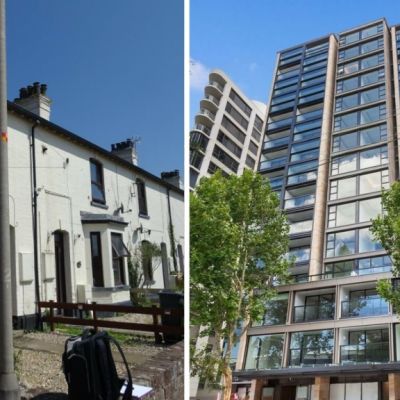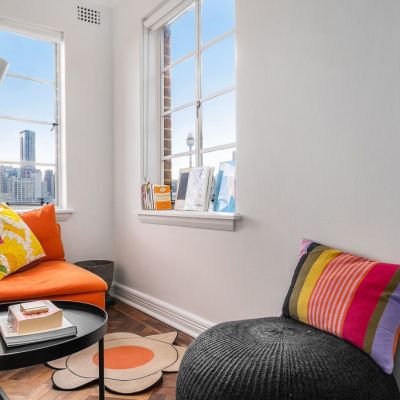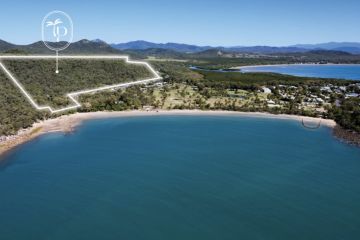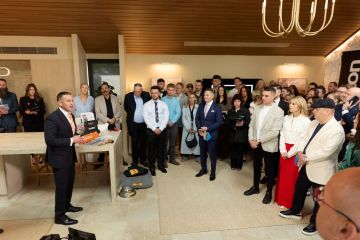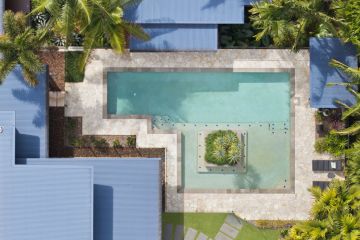Moving from a Sydney unit to a house gets five times harder in a generation
The difference in price between a typical unit and a house in Sydney has reached an eye-watering $610,662, new data reveals
Houses were 71 per cent more expensive to buy than a unit by December 2024, just shy of the record high of 72.8 per cent in August. Sydney’s median house price of $1,470,625 is now almost double the median unit price of $859,963.
That gap has increased more than five times in the past two decades, with the median house price costing just $106,208 more than the typical unit in December 2004 on CoreLogic data.
Experts say upsizers are finding it just as hard as first home buyers given the exponential gap. Some are moving interstate and looking for new jobs, while others are investing elsewhere and renting in the suburb they wish to live in.
Meanwhile, first home buyers are priced out of buying a house altogether unless they have a significant cash gift, a large deposit and a dual high income.
CoreLogic research director Tim Lawless said the pandemic caused house values to surge, with the premium for a house almost doubling since then.
“When the pandemic hit, it amplified this trend in house values where it increased by just over 40 per cent. House values have risen by a lot more than unit values over the past five years,” he said.
“For all intents and purposes, the latest figures show a record margin when affordability is extraordinarily stretched. It is a little bit bewildering to see such a significant gap.”
Lawless said buyers may have to leave Sydney and look for job prospects elsewhere.

“This presents one of the greatest challenges as a big city like Sydney tends to have more labour market opportunities,” he said.
Lawless said buyers on a low income may have to wait significantly longer to be able to purchase a property.
“On average, it takes more than 10 years to save for a 20 per cent deposit if you’re buying at the median value. It will be a lot harder if you’re on a low income as well.”
Equilibria Finance managing director and mortgage broker Anthony Landahl said while it’s common to see upsizers relocate to Wollongong, the Blue Mountains and the Central Coast, some have even had to move interstate.
“The widening gap is having a big impact, almost more on upsizers than first home buyers. If the median house price is $1.4 million, and you’re selling your unit for $900,000, your challenges are how much of the sale you can use for your deposit and the size of the mortgage,” he said.
“They are finding a more affordable house where they can bring up a family as a long-term proposition, rather than moving into a townhouse for a couple of years as a stepping stone.”
With first home buyers essentially priced out of buying a house, Landahl said they might continue renting and build an investment portfolio in Brisbane, Perth or Adelaide to get a foot on the ladder.
ANZ economist Madeline Dunk said units may become more appealing if the ageing population help narrow the gap.

“Whether we see parity again is questionable, but we will have an increasing number of downsizers over the coming years. When people downsize, units are more attractive, so you might see the gap narrow, but we have a long way to go for that to happen.”
Dunk suggested the gap between house and unit values may have passed its peak.
“What we’ve seen recently is that the more affordable properties are doing better. They’re either falling less, or they’re rising more, depending on where you’re looking. It all goes back to affordability,” she said.
Buyer’s Domain principal Nick Viner said many first home buyers are compromising by moving further out or settling on a unit.
“Going further out is definitely the most common, and sometimes they question just how far they have to go to be able to afford a house,” he said.

But Viner said many first home buyers find units unappealing due to strata management and ongoing costs.
Michael Tuohy and his partner Alexia have been searching for a house for six months with a $1.1 million budget.
While Michael doesn’t mind living in a unit, strata costs make a house more desirable.
“When we set the budget, we knew we would be priced out of most suburbs within a half hour of the city, based on the decision not to buy a unit. We initially considered the inner west and eastern suburbs,” said the 29-year-old who works in the legal industry.
“If we wanted to live in the eastern suburbs or the inner west, we could rent there and purchase an investment property elsewhere. That way, we can still live in an area that suits our lifestyle.”
States
Capital Cities
Capital Cities - Rentals
Popular Areas
Allhomes
More

